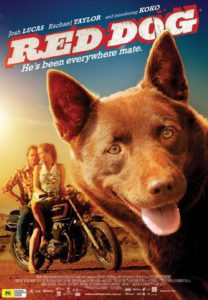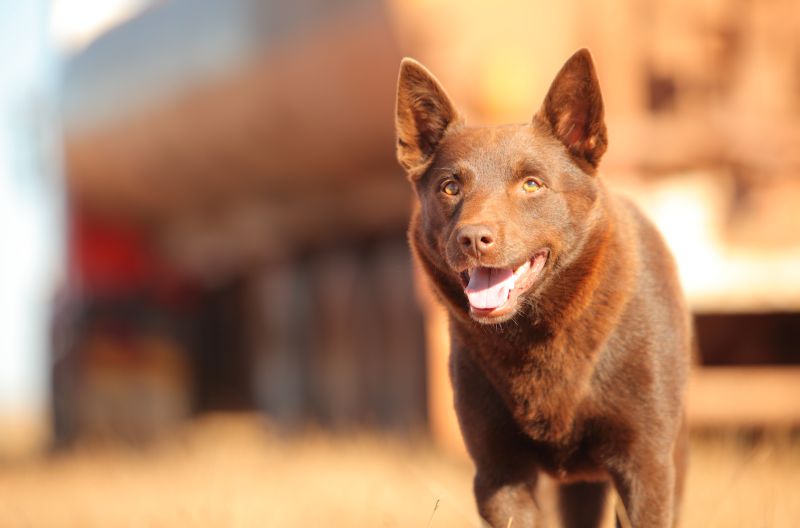 Australia is filled with stories that define the national character, although the one behind Red Dog may be one of the most unique. The Red Dog of Karratha was a kelpie who became famous for travelling the Pilbara region of Western Australia during the 1970s, so much so that his statue graces the town of Dampier. Known as Bluey, Tally Ho, and Dog of the Northwest, Red Dog’s story was first told in a collection of short stories compiled by Nancy Gillespie, documenting the accounts of the residents of the Pilbara. The story was later told by Beverly Duckett in her book Red Dog: the Pilbara wanderer, and most recently in British author Louis de Bernières’ semi-fictional novel Red Dog. The only truly surprising thing about this remarkable tale is that it is only now making its way to the big screen.
Australia is filled with stories that define the national character, although the one behind Red Dog may be one of the most unique. The Red Dog of Karratha was a kelpie who became famous for travelling the Pilbara region of Western Australia during the 1970s, so much so that his statue graces the town of Dampier. Known as Bluey, Tally Ho, and Dog of the Northwest, Red Dog’s story was first told in a collection of short stories compiled by Nancy Gillespie, documenting the accounts of the residents of the Pilbara. The story was later told by Beverly Duckett in her book Red Dog: the Pilbara wanderer, and most recently in British author Louis de Bernières’ semi-fictional novel Red Dog. The only truly surprising thing about this remarkable tale is that it is only now making its way to the big screen.
When Thomas (Luke Ford, Animal Kingdom) rolls into Dampier to find four men about to shoot a dog, little does he realise that he will become part of an Australian legend. Pub owner Jack (Noah Taylor, Submarine) begins to tell the tale of Red Dog, a Kelpie who wandered into their lives and became a part of the township. Soon everybody has a tale to tell about Red Dog, and in particular the relationship he had with American bus driver John (Josh Lucas, The Lincoln Lawyer), the only man who could rightly call Red Dog his own.
Australian films have a reputation for being a bit of a downer, and Kriv Stenders’ Red Dog is noticeably absent of suburban angst, gangland shootings and incestuous narratives. In its place is a heartwarming tale that completely captures the Australian spirit that was still well and truly alive during the 1970s period in which the film is set: multiculturalism, mateship and a larrikin spirit. Using the titular Red Dog as a framing mechanism, the film is less of a feature narrative than it is a series of short vignettes based on the stories of the township. A concurrent story runs alongside it, with the locals once again rallying around Red Dog as he lays dying, trading stories and sharing the best that the kelpie had to offer. There is a potentially cynical interpretation of the story, in which a reading of Americans being our true lords and masters is viable, but this is best saved for a weightier discussion. Red Dog is from the tradition of Australian cinema that doesn’t mind poking fun at itself, and any tongues that aren’t wagging are firmly planted in cheek.
Red Dog may be corny at times, and its sense of humour is occasionally skewed. For instance, the showdown between the nefarious Red Cat and Red Dog is represented in a Looney Tunes-style whirlwind of fighting, but even this is not incongruous with the tone of the film. Filled with a cast of stereotypical characters, from the Italian immigrant worker who can’t stop talking about home to the plethora of bearded ocker miners in Dampier, Red Dog‘s real star is of course Koko, the Kelpie who was elevated to stardom from humble beginnings. There is some seriously good animal acting going on here, with the pup outshining an excellent cast of Australian characters on-screen.
Like the best Australian films before it, from Crocodile Dundee to Muriel’s Wedding and Dirty Deeds, Red Dog is filled with the kind of eccentric retro-charm and inevitable sadness all rolled into one singular cultural ball that is sure to please audiences of all ages.
[stextbox id=”custom” caption=”The Reel Bits”]Red Dog is one of the most beautifully shot, and told, “animal” films (Australian or otherwise) in years. Designed to be enjoyed by anyone with a pulse.[/stextbox]
Red Dog was released on 4 August 2011 in Australia from Roadshow Films.




